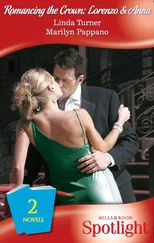Edward recorded in his journal that the sweat arrived in London on 9th July and immediately proved even more vehement than any epidemic he remembered. If a man felt cold ‘he died within three hours and if he escaped it held him for nine hours, or ten at most’. Seventy people died in London the next day, and on the 11th, the King reported, ‘120 and also one of my gentlemen, another of my grooms fell sick and died’. 14 In Leicestershire, a Bradgate neighbour, Lord Cromwell, succumbed and, on the early morning of the 14th, it struck within the Grey family. In their rooms at Buckden, the former palace of the Bishop of Lincoln, Katherine Suffolk’s sons, Henry and Charles, awoke that morning with a sense of apprehension. It was the first symptom of the illness. The brothers were soon seized with violent, icy shivers, a headache and pains in the shoulders, neck and limbs. Within three hours the cold left them and their temperatures rose dramatically. It was then that the characteristic sweating began.
The boys’ mother rushed to her children’s bedside from her estate at Grimsthorpe in Lincolnshire as their pulses began to race and an incredible thirst took hold. But finally exhaustion brought an irresistible desire to sleep. The elder brother, Henry, Duke of Suffolk, was already dead when their mother arrived. The younger, Charles, followed before seven o’clock on the morning of 15th July. Katherine Suffolk was devastated by their loss. Henry, at fifteen, ‘stout of stomach without all pride’; Charles ‘being not so ripe in years was not so grave in look, rather cheerful than sad, rather quick than ancient’. 15 She sat alone in the dark, refusing food. The boys’ tutor Thomas Wilson worried as he saw his mistress lose weight, ‘your mind so troubled and your heart so heavy…detesting all joy and delighting in sorrow, wishing with [your] heart, if it were God’s will, to make your last end’. He begged her to be ‘strong in adversity’. 16
Katherine of Suffolk’s friend and Lincolnshire neighbour, William Cecil, also wrote to her with words of comfort. Her letter to him replied miserably that nothing thus far in her life had made her so aware of God’s power. That she was being punished for her sins she was certain. The preacher Hugh Latimer had even told her which ones: it was her greed in enclosing land and depriving the poor of food. She could not bear to see anyone, she told Cecil. Although she was certain her children were with God and she knew she should rejoice, she found she could not. At Grimsthorpe she kept their clothes and possessions: black velvet gowns furred with sable, fashionable crimson hose, tennis rackets and the rings they practised catching with lances at the tilt. Her shock and dismay, if not her pain, was felt across the evangelical elite. Her sons were amongst the brightest hopes of their generation. The great Latinist, Walter Haddon, the brother of the Bradgate chaplain James Haddon, wrote a eulogy in their memory; the King’s tutor, John Cheke, composed an epitaph, while Wilson wrote a prose biography and several Latin poems, a volume of which was dedicated to Dorset. 17 Jane’s place as a Godly leader, by example, for her generation was now more important than ever.
* The famous collected tales of love by the Italian author who had inspired Chaucer.
Chapter VIII Jane and Mary
The chapel at the Princess Mary’s palace of Beaulieu lay across the courtyard, opposite the great hall. Inside it had a distinctive layout, with a large ante chapel at right angles to the body of the main chapel. As Jane crossed by this ante chapel she noticed, to her irritation, a consecrated Host was placed on the altar in a golden receptacle known as a ‘monstrance’. In Catholic belief the Host was the transformed body of Christ, but to Jane its veneration was the idolatrous worship of a piece of unleavened bread. When Mary’s servant, Lady Anne Wharton, walking beside her, dropped to one knee and made the sign of the cross, Jane asked sarcastically whether ‘the Lady Mary were there or not?’ Lady Wharton replied tartly that she had made her curtsey ‘to Him that made us all’. ‘Why,’ Jane retorted, ‘how can He be there that made us all, [when] the baker made him?’ 1
Lady Wharton reported her exchange with Jane to Mary, who is said by the martyrologist John Foxe, to have ‘never loved her after’. There is no evidence of that, and Mary later showed fondness for the younger Grey sisters, particularly the affectionate and easy-going Katherine. But the princess had good reason to be both angry and concerned that Jane had insulted her religious beliefs in her own house. At the time of the Grey sisters’ last recorded visit to Beaulieu, in November 1549, Mary had guessed already that the fall of the Protectorship had marked only the beginning of her misfortune. After the peace treaty with France six months later, in March 1550, the regime had less to fear from Mary’s protector, the Emperor Charles V, and was becoming increasingly radical. The religious changes Jane’s father, Dorset, was promoting were the most extreme England would witness before the Puritan Commonwealth a century later. Music was being expunged from churches; art was similarly attacked and tombs destroyed along with their exhortations to pray for the dead. A horrified visitor from Europe described the newly stark appearance of England’s churches, with ‘no images in relief, nor pictures, no crosses, no sepulchres raised above the ground…in place of the altar is a table set with a cloth but without candles’, on the white surfaces of the church walls were written passages from the Bible, ‘in the middle of which one sees the arms of the King’. In Oxford, bonfires were consuming nearly every book in the university library. 2 At the same time Mary found her right to have Mass said publicly in her own chapels was under attack.
Dorset’s closest political ally, Parr of Northampton, had led the case against Mary within the Council, arguing that it had been agreed that ‘she alone might be privileged with but two or three of her women’. Northampton, described by Roger Ascham as ‘beautiful, broad, stern and manly’, was cut from similar cloth to Dorset. A sophisticated courtier, educated alongside Dorset in the household of the late Duke of Richmond, he shared Dorset’s passion for hunting, learning and, above all, religious reform. The two marquesses are linked in the sources from this period like Tweedle Dum with Tweedle Dee. Together they were always at the King’s side and Mary knew that Edward, like Jane, was already showing himself a fervent evangelical. Edward’s public note-taking during sermons and his recent striking out of the mention of saints in the oath of a new bishop, had all advertised his enthusiasm for the new religion. She must have feared that, like Jane, he too would attack the practice of her beliefs in her own house, in due course.
By Christmas of 1550 the Council had ordered the arrest of Mary’s chaplains for saying Mass in her absence. But worse followed when Mary visited Edward for the seasonal celebrations. Her warm greeting for her thirteen-year-old brother was met with exactly the confrontation she had surely feared would soon come. With the two marquesses, Dorset and Northampton, standing by to witness her humiliation, Edward cross-questioned his older sister on whether she was having the Mass said publicly in her chapel. She burst into tears under his assault and, to the embarrassment of the two marquesses, the shocked boy then also began to cry. They wrapped up the meeting as quickly as they could, affirming ‘that enough had been said and…that the King had no other thought except to inquire and know all things’. 3 But it was not to be the end of the matter.
Mary’s household was a magnet for Catholic dissenters. The Masses she held attracted an important following at court and in the areas in which she lived, while even ‘the greatest lords in the kingdom were suitors to her to receive their daughters into her service’: amongst them the family of Edward’s old playmate, Jane Dormer. 4 It was a problem that needed to be addressed, and Edward followed up what he had said to Mary with a letter demanding she obey his laws on religion. 5 Despite his tears he had not relented. Mary, arguing he was still not of an age to overthrow his father’s religious settlement, continued to have Mass said, even laying on extra services ‘and with greater show’. 6 But in March 1551 the young King informed Mary that he had suffered her stubbornness long enough and that henceforth she could only hear Mass in her private apartments. 7 When she persisted in having her Mass said in the chapels there were consequences.
Читать дальше












